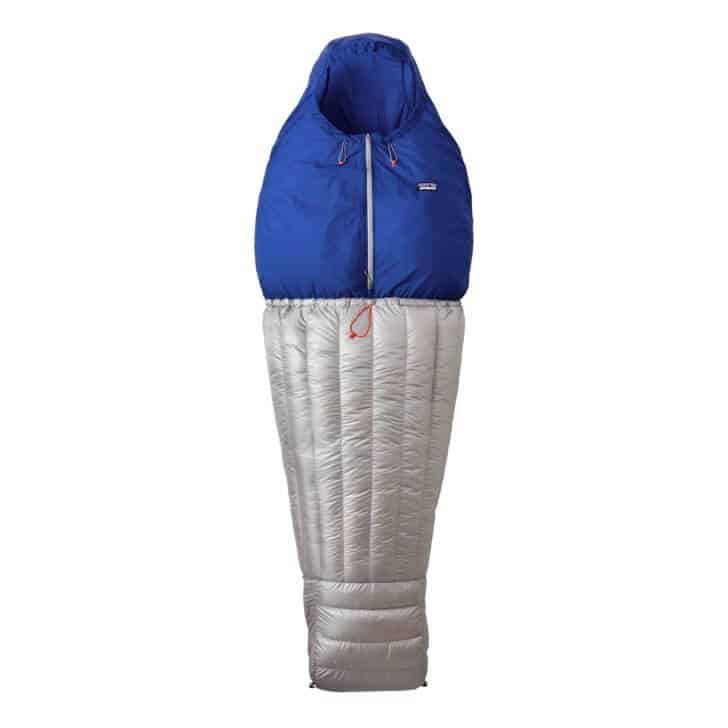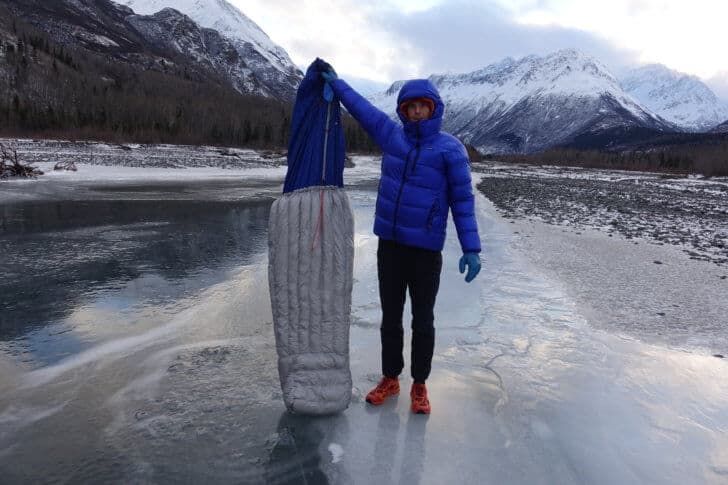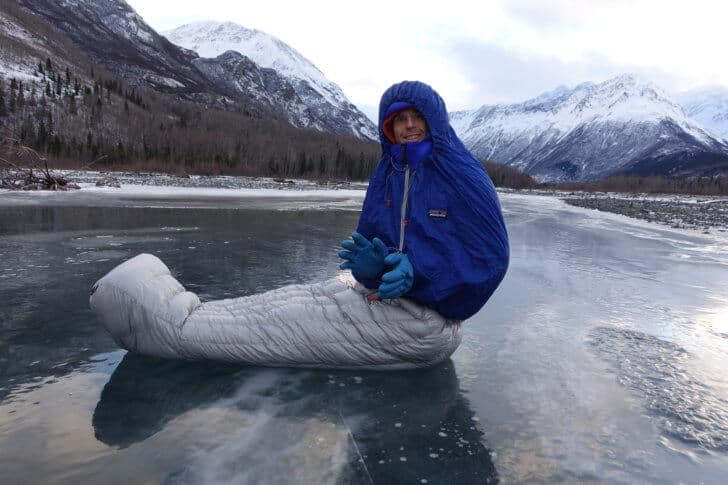Overview
Of the approximately 70 sleeping bags I’ve used, the Patagonia Hybrid is by far the best for one specific application: if you’re climbing a technical route with a down parka and will sleep on a small ledge where you can’t pitch a tent. The foot box is extra large for sleeping with climbing boots on, the interior Houdini fabric has a high tear strength in case a boot lace-hook snags on the fabric, and the uninsulated upper half traps warm air, blocks wind, and feels cozier than a traditional elephant foot sleeping bag.

I do not recommend the Hybrid bag for backpacking. It is extremely specialized for climbers utilizing a weather window to sleep on small ledges not conducive for pitching a tent. If the route has ledges or snow features large enough to pitch a tent, I have found that I’m warmer and more comfortable with either a quilt sleeping bag, sharing a mummy bag with my climbing partner, or (my favorite) using a two-person sleeping bag.
The Hybrid bag has no mechanism to vent its lower half and is, therefore, poorly suited for three-season use. I do not recommend the Hybrid bag for backpacking, ski touring, or general camping.

Features and Specifications
- Weight:
- Short: 15.9 oz (451 g)
- Regular: 17.3 oz (490 g)
- Long: 19.9 oz (564 g)
- Lower half has equivalent to 20 degrees Fahrenheit (-7 C) insulation
- Box-baffle construction with 850-fill down
- Uninsulated upper half
- Extra large foot box for sleeping with climbing boots on
- 1.2 osy (40.7 gsm) 15-denier nylon interior fabric is stronger and more durable than the exterior fabric (0.85 osy or 28.8 gsm 15-denier nylon) for wearing climbing boots and a harness inside the bag
- Two-way zipper
Review Context
I’ve tried a variety of elephant’s foot sleeping bags and have never found one that could match the comfort, versatility, or warmth-to-weight ratio of a quilt bag. Several years ago, I concluded that elephant’s foot sleeping bags are best for sleeping upright on a tiny ledge (note: even for sponsored athletes and brand ambassadors, that very rarely happens!). In testing this sleeping bag, I sought to answer: “Could the Patagonia Hybrid sleeping bag perform better than any of my current sleeping bags?”

Field Testing
I used this bag on four different overnight trips in Southcentral Alaska in a variety of conditions and with three different down parkas:
- 10 F (-12 C), paired with the Patagonia Grade VII parka
- 20 F (-7 C), paired with the Patagonia Grade VII parka
- 15 F (-9 C), paired with the Western Mountaineering Snojack parka
- 30 F (-1 C), paired with the Feathered Friends Khumbu parka
Performance Assessment
Member Exclusive
A Premium or Unlimited Membership* is required to view the rest of this article.
* A Basic Membership is required to view Member Q&A events




Home › Forums › Patagonia Hybrid Sleeping Bag Review